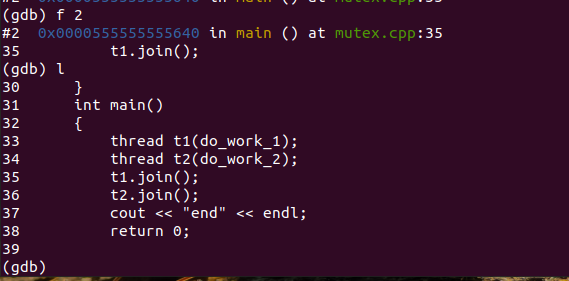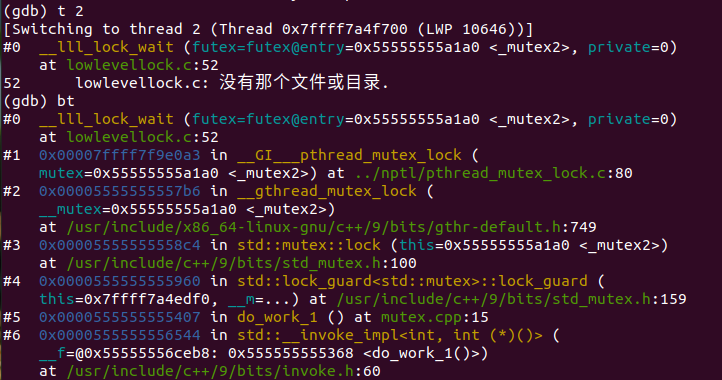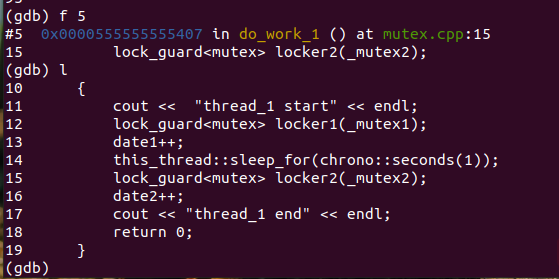#include <thread>
2 #include <iostream>
3 #include <mutex>
4 using namespace std;
5 mutex _mutex1;
6 mutex _mutex2;
7 int date1;
8 int date2;
9 int do_work_1()
10 {
11 cout << "thread_1 start" << endl;
12 lock_guard<mutex> locker1(_mutex1);
13 date1++;
14 this_thread::sleep_for(chrono::seconds(1));
15 lock_guard<mutex> locker2(_mutex2);
16 date2++;
17 cout << "thread_1 end" << endl;
18 return 0;
19 }
20 int do_work_2()
21 {
22 cout << "thread_2 start" << endl;
23 lock_guard<mutex> locker2(_mutex2);
date2++;
25 this_thread::sleep_for(chrono::seconds(1));
26 lock_guard<mutex> locker1(_mutex1);
27 date1++;
28 cout << "thread_2 end" << endl;
29 return 0;
30 }
31 int main()
32 {
33 thread t1(do_work_1);
34 thread t2(do_work_2);
35 t1.join();
36 t2.join();
37 cout << "end" << endl;
38 return 0;
39
40 }
写了一个多线程死锁的程序,在linux下
(1)g++ -Wall -g -o test mutex.cpp -lpthread
(2) gdb test
(3) 执行r

产生死锁
(4) 按下ctrl + C 使程序中断
查看当前主线程的栈帧(bt)

查看栈帧2停的位置

初步判断是产生了死锁,因为join没有执行。

查看一下当前的线程,转换一下线程,查看对应的栈帧。


查看到线程2 卡在locker2上,就可以判断产生了死锁
原文:https://www.cnblogs.com/hxl-learning-space/p/14769991.html